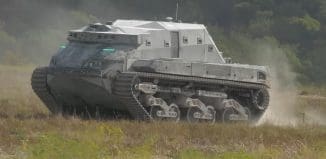DARPA Refocuses Precision Close Air Support Effort On Manned Aircraft
This post is also available in:  עברית (Hebrew)
עברית (Hebrew)
Raytheon is moving ahead to demonstrate more rapid and accurate close air support after finalizing a contract with the U.S. Defense Advanced Research Projects Agency (Darpa) to continue the Precision Close Air Support (PCAS) program.

According to Aviation Week PCAS has been modified to shift the emphasis from automating close air support by enabling ground forces to control the weapons on unmanned aircraft. Instead, the program has been focused on transitioning technology to manned CAS aircraft.
The original plan was to demonstrate unmanned CAS using a Fairchild A-10 converted to optionally piloted mode by Aurora Flight Sciences. Now PCAS will be demonstrated using a manned A-10, says Dave Bossert, Raytheon program manager.
“The fundamental goal is still the same: to decrease the timeline by a factor of 10 from a request for fire to an effect on target — from 60 min. to 6 min. for an A-10 20 nautical miles away,” he says. “And we will still use the A-10, but not optionally manned.”
iHLS – Israel Homeland Security
The modified program comprises two elements. PCAS-Air is the airborne system, providing the interface between the aircraft and the joint terminal attack controller (JTAC) on the ground. PCAS-Ground is the JTAC kit, including Android tablet computer, head-up display and radio.
PCAS will provide improved communications and situational awareness for the JTAC and CAS pilot, with all-digital messaging and shared displays of sensor imagery, targets, weapons and their effects. “The PCAS-Air piece was the A-10. Now it is “Smart Rail” electronics small enough so that anything that can carry the Hellfire missile can be PCAS-Air-enabled,” Bossert says. “We are platform-agnostic, sensor-agnostic and radio-agnostic.”
The Smart Rail includes a computer that hosts the PCAS algorithms, a GPS/inertial navigation system, and it talks to the JTAC via a dedicated data-link radio and to the aircraft sensors and an Android tablet in the cockpit via an interface box.
“Tight coupling of the JTAC and pilot is key,” Bossert says, with PCAS providing the JTAC access to computing power and high-resolution sensors on the aircraft without the Smart Rail being part of its operational flight program. “It is separate from, but hosted on, the aircraft.”































